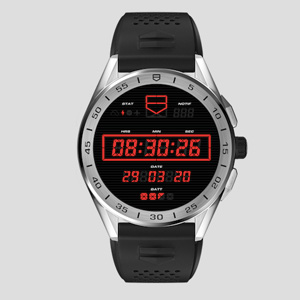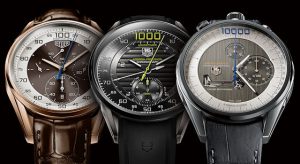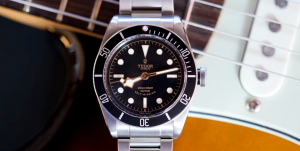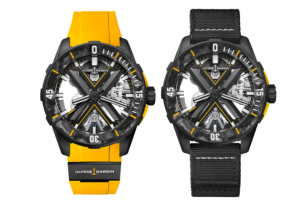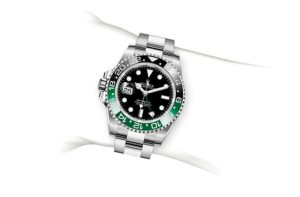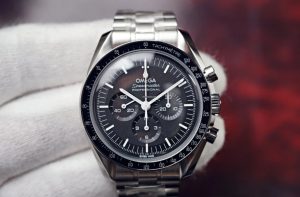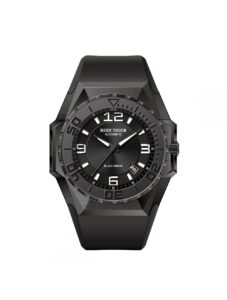
The TAG Heuer Monaco Calibre 11 Edition Steve McQueen, an updated version of the watch McQueen wore in the movie “Le Mans,” has racing written all over it. Did it take the checkered flag in our test? Find out as Alexander Krupp looks under the hood in this piece with photos by OK-Photography.

More than four decades have passed since Steve McQueen wore a Heuer Monaco chronograph in the car-racing movie “Le Mans.” Two years ago, TAG Heuer (the company added “TAG” to its name in 1985) launched a commemorative edition of the watch called the Monaco Calibre 11 Edition Steve McQueen. We took it out for a test drive. The watch’s styling evokes its racing heritage. It has racing stripes on its dial – along with a logo that reads simply “Heuer” in homage to its pre-TAG origin − and a perforated strap. The watch is big – 39 mm by 39 mm and 15 mm thick – but it’s very comfortable. Nothing scratches, pinches, or rubs. The clasp and supple calfskin strap both feel pleasant on the wrist.
The movement is a Sellita SW 300 base, with Glucydur balance, paired with a chronograph module made specifically for TAG by Dubois Dépraz. (Most other Monaco chronographs contain the ETA 2894.) The movement’s configuration enables TAG to place the crown on the left side of the case while keeping the chronograph pushers on the right, the same arrangement that was used in the original Monaco. (That watch, launched in 1969, was one of the world’s first automatic chronographs. It contained a caliber developed by Breitling, Büren and Dubois Dépraz, and, like the caliber in our tested watch, was numbered “11.”) It is accomplished by turning the base movement by 180 degrees and then installing the chronograph module in the opposite direction so the push buttons are in their usual position.
Having the crown on the left gives the watch historical accuracy and an unusual look to boot, but does it offer any practical advantages? One benefit is clear: assuming you are wearing the watch on your left hand, the crown won’t dig into the back of your hand when you bend your wrist sharply, to do a few push-ups, for example. Unfortunately, the disadvantages outweigh this plus. First, a right-handed wearer must take the watch off before he can wind or set it because he’ll find it cumbersome or impossible to operate the crown with his right hand. Second, after he takes the watch off, he’ll have to do the winding or setting with his left hand, and not every right-handed wearer will find this easy. Third, the directions for winding and setting are reversed, i.e., you not only have to use the “wrong” hand, you also have to move your fingers in the opposite direction to the one you’re accustomed to.
The chronograph module, which is on the dial side of the movement and hence concealed, relies on the simple but effective cam method of switching, which we’re familiar with from ETA’s workhorse 7750. The chronograph works via vertical coupling, which prevents spasmodic jumping of the chronograph seconds hand when the stopwatch function starts. The watch’s running behavior was basically good. On the wrist and on the timing machine, with and without the chronograph running, the average daily gain was about three seconds. The amplitude scarcely declined when the chronograph was switched on, which leads us to conclude that all the working surfaces in the chronograph module are well crafted. We discovered a maximum difference of 11 seconds among the various positions in ordinary operation and 12 seconds with the chronograph switched on. That’s why the watch earned only six points in the “rate results” category. The low daily gain and stable amplitude would otherwise have earned the watch a perfect 10.
The dial’s legibility is also a drawback. The easiest display to read is the minutes counter at 9 o’clock (its hand runs continually rather than jumping forward once a minute). The main dial achieves its very successful retro and auto-racing look by eliminating numerals to mark the hours and minutes, but this makes the watch harder to read. Furthermore, the contrast between the luminous areas on the center-mounted hands and the mostly pale dial is very weak. The luminous material is applied sparingly and glows only dimly in the dark. And the running seconds subdial is confusing because it has so many markers. Poor legibility won’t dissuade fans of mechanical timekeeping who have taken a shine to this smartly styled watch. The watch’s price, $8,100, is high, but not too high given the watch’s expensive movement, its high quality and its good looks.
